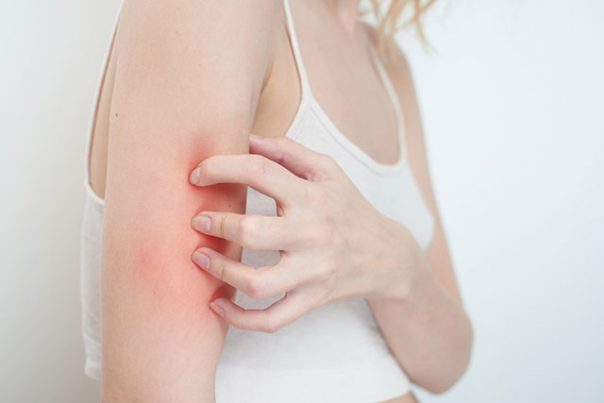
Porphyria cutanea tarda – causes, side effects and treatments at NaturalPedia.com
Wednesday, July 25, 2018 by Zoey Sky
http://www.naturalpedia.com/porphyria-cutanea-tarda-causes-side-effects-and-treatments-at-naturalpedia-com.html

Porphyria cutanea tarda (PCT) refers to a type of porphyria/blood disorder that affects a patient’s skin. PCT is one of the most common types of porphyria.
It is also called “vampire disease” because individuals with PCT usually experience symptoms after exposure to sunlight. Porphyria cutanea tarda can have several causes, and they are often categorized as either genetic or acquired.
Common genetic causes of the condition include:
- A family history of porphyria cutanea tarda
- A family history of liver disease or liver cancer
- A higher than normal liver iron content
- An inherited deficiency of the liver enzyme uroporphyrinogen decarboxylase
Common acquired causes of PCT include:
- Alcohol consumption
- Exposure to certain environmental factors or chemicals, e.g., Agent Orange
- Having hepatitis C
- Having HIV
- Iron overload
- Smoking
- Use of estrogen therapy
- Use of oral contraceptives
Sometimes, it can be difficult to determine the exact cause of porphyria cutanea tarda.

Known symptoms of porphyria cutanea tarda
The symptoms of porphyria cutanea tarda usually include:
- Blisters on skin that’s exposed to the sun, like the hands, face, and arms. Once blisters form on the skin, a patient’s skin may peel.
- Crusting and scarring of the skin. Scars usually form once the blisters heal.
- The formation of sores after minor injuries to the skin.
- Fragile/thin skin.
- Hyperpigmentation/patches of skin become darker that usually develops on the face, hands, and neck.
- Increased hair growth (often occurs on the face).
- Liver damage.
- Photosensitivity/skin becomes sensitive to the sun.
- Skin that’s itchy, red, or swollen.
- Urine is darker than normal/reddish brown.
Risk factors for porphyria cutanea tarda may include a family history of PCT or having hemochromatosis/an iron overload disorder.
Body systems harmed by porphyria cutanea tarda
Porphyria cutanea tarda may cause the following complications:
- Anemia and other conditions because of low levels of oxygen transport.
- Bacterial infections due to the blistering of the skin.
- Chronic liver conditions, like scarring and fibrosis, which often occurs in patients with sporadic PCT.
- Gradual and severe deformation of the skin or extremities.
- Patients with PCT often suffer from various deficiencies of certain important vitamins and minerals like beta-carotene, retinol, and vitamins A and C.
- Severe emotional stress due to changes in one’s appearance.
Food items or nutrients that may prevent porphyria cutanea tarda
Patients with porphyria cutanea tarda must limit their consumption of iron-rich foods like red meats.
Consuming enough vitamin C can help slow down oxidation reactions in the liver. Sources include fresh fruits and vegetables, fresh juices, or an iron-free multivitamin with vitamin C.
Treatments, management plans for porphyria cutanea tarda
Porphyria cutanea tarda can be treated following proper diagnosis. Treatment for the condition will focus on managing the factors that cause/trigger PCT and treating its symptoms.
Treatment options for PCT may include:
- Blood transfusions – This can help minimize the iron load in the body.
- Oral anti-malarial drug chloroquine and hydroxychloroquine (low-dose) – This can help remove the excess buildup of porphyrins in the liver. However, this kind of treatment can take at least six to 12 months before it takes effect.
- Medications – Can help treat hepatitis C.
- Treatment for liver disorders – This can sometimes require a partial or complete liver transplant.
Patients with PCT can also avoid direct exposure to sunlight and apply natural beta-carotene topical sunscreen creams to manage their symptoms. Healthcare professsionals can also recommend supplements to address any vitamin and mineral deficiencies.
Where to learn more
- 6 Best Anti Skin Rash Foods
- Color of your urine reveals about your health
- Does Your Food Have Light?
- Fluorescent Light Bulbs Linked with Eczema, Seizures, Migraines, Skin Rashes
- Iron-deficiency, The Wrong Supplements Can Hurt You
Summary
Porphyria cutanea tarda (PCT) refers to a type of blood disorder that affects a patient’s skin.
The symptoms of PCT usually include fragile/thin skin, hyperpigmentation, liver damage, and photosensitivity.
PCT may cause complications like anemia, bacterial infections, and chronic liver conditions.
Patients with PCT must consume enough vitamin C to help slow down oxidation reactions in the liver.
Treatment options for PCT may include blood transfusions, oral anti-malarial drug chloroquine and hydroxychloroquine, medications for hepatitis C, and treatment for liver disorders.
Sources include:
Tagged Under: Tags: porphyria cutanea tarda





